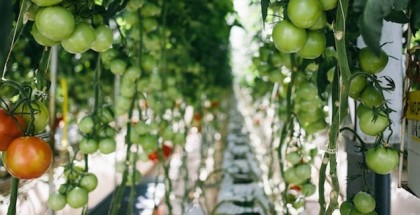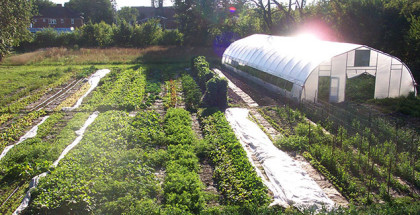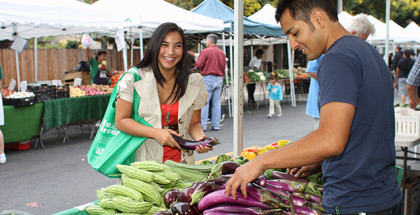Sustainability and Rural, Urban Collaboration Key to Agriculture Economy in California, Says UCANR Head
March 3, 2016 | Rose Egelhoff

Dr. Glenda Humiston Vice President UC Agriculture and Natural Resources (UCANR).
Dr. Glenda Humiston has been Vice President of the University of California Division of Agriculture and Natural Resources (UCANR) for seven months, but she has been on farms throughout her life.
Growing up, Dr. Humiston’s family’s farm was just over 300 acres, with a small dairy, cow-calf operations, crops and a home garden to feed the family. But her parents had to work off-farm to make ends meet.
“It was a typical family farm story back then,” she says.
Dr. Humiston’s parents’ struggle fueled her interest in farm policy, an interest that was cemented during a Peace Corps stint in Tunisia where she helped set up a large, California-style dairy in an area without the infrastructure.
In Tunisia, she saw that policy and planning could make or break an operation. So when she came back to the U.S. she kicked off a career in agricultural policy, eventually earning a Ph.D. at Berkeley in Environmental Science, Policy and Management and serving as the California Director of Rural Development for the U.S. Department of Agriculture.
Though Dr. Humiston is now the head of a powerful branch of the UC system, her manner is more farmer than politician; she is sharp but straightforward and speaks with earnest enthusiasm about ANR’s many projects.
Dr. Humiston oversees a staggering portfolio of projects ranging from pollinator health to pest management. ANR also provides information and services to farmers through their system of Cooperative Extension offices.
Dr. Humiston says that one challenge she faces in her work is that agriculture and natural resources are often taken for granted in the University system and by the public at large.
“The U.S. has been extraordinarily blessed with a richness of agricultural productivity as well as just enormous natural resources,” Dr. Humiston says. “That’s been there for so long and has been such a foundation for our economy and our communities and our health, that people just don’t think about it.”
Because we do not think about agriculture, “oftentimes investments aren’t made that would really help it thrive,” she says.
Still, Humiston sees California as a strong leader on sustainable agriculture issues, in the U.S. and internationally. She says the University of California has done “a fairly good job” pushing the sustainable agriculture agenda, though she sees room for improvement.
“We probably could do more as far as where we prioritize our research dollars,” she says, adding that the University is moving in that direction with plans to fund more research related to sustainability.
ANR is already involved with sustainable agriculture issues through the Agricultural Sustainability Institute at UC Davis, the thriving agroecology program at UC Santa Cruz and a ten-acre organic research plot at the Kearney Research Extension Center.
Though it can be tempting to frame sustainability issues as problems that put cities in competition with agriculture, Dr. Humiston sees this as a dangerous false dichotomy. She believes that issues like water use should be viewed more holistically, since both farms and cities are using water to support human needs.
She says that a collaborative approach can often solve more problems than a competitive one. During her time at ANR, Humiston has seen groups around the state use collaboration to their advantage, such as the Rural-Urban Connections Strategy developed by the Sacramento Area Council of Governments.













Submit a Comment